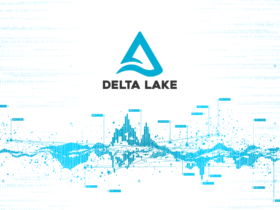Snowflake is a cloud-based data warehousing platform that has arisen as a primary answer for organizations hoping to use the power of data analytics in the cloud. With its adaptability, execution, and usability, Snowflake offers critical benefits over conventional on-premises data warehouses. In any case, moving to Snowflake includes cautious planning to streamline costs while augmenting benefits. In this article, we’ll investigate different cost-cutting measures to guarantee a fruitful Snowflake migration.
Assess Current Infrastructure Costs:
The most vital phase in any migration project is surveying current infrastructure costs. Snowflake cost management includes assessing hardware, maintenance, software licenses, and faculty costs for managing existing data warehouses. By leading a comprehensive expense investigation, associations can distinguish regions for potential savings and achieve practical migration objectives.
Rightsize Compute Resources
One of the critical benefits of Snowflake is its capacity to powerfully allocate compute resources according to workload requests. By rightsizing compute resources, associations can stay away from overprovisioning and diminish superfluous expenses. Snowflake’s auto-scaling feature permits clients to consequently change compute resources up or down because of workload changes, guaranteeing ideal execution while limiting costs.
Utilize Snowflake’s Storage Optimization
Snowflake offers built-in storage optimization features, like grouping and programmed information pressure, to limit capacity costs. By sorting out information into productive groups and utilizing compression techniques, associations can lessen capacity impressions and lower overall costs. Also, Snowflake’s storage tiering permits clients to level information because of access frequency, further advancing storage costs.
Execute Cost Allocation and Monitoring
Effective cost management requires perceivability into asset usage and spending patterns. Snowflake cost monitoring gives far-reaching cost allotment and observing instruments to track use at the client, record, and warehouse levels. By carrying out cost allocation labels and checking dashboards, associations can recognize cost drivers, allot expenses precisely, and improve resource use to accomplish cost savings.
Leverage Snowflake’s Pay-Per-Use Model
Snowflake works on a pay-per-use pricing model, permitting associations to pay just for the assets consumed. By utilizing Snowflake’s compensation pay-per-use pricing, organizations can stay away from forthright infrastructure investments and adjust expenses for actual use. Snowflake’s straightforward pricing model and unsurprising charging cycles empower associations to estimate expenses all the more precisely and enhance cost management strategies likewise.
Optimize Data Transfer and Query Performance
Limiting data transfer and improving query performance is fundamental for lessening costs related to network departure and compute resources. Snowflake’s productive information storage and query handling abilities assist associations with limiting data movement and augment query performance, bringing about lower costs. By streamlining data pipelines, using materialized views, and inquiry optimization methods, associations can accomplish massive cost savings.
Automate Data Governance and Compliance
Manual data administration and consistent processes can be tedious and resource-intensive. Snowflake offers automated data administration and consistency features, for example, data masking, encryption, and evaluating, to smooth out administrative consistency and lessen functionality. Via automating data administration processes, associations can further develop productivity, decrease consistency dangers, and lower associated costs.
Continuously Monitor and Optimize Costs
Cost optimization is a continuous process that requires constant checking and optimization. Snowflake cost monitoring gives detailed expense use reports and suggestions to assist associations with distinguishing cost-saving opportunities and improving resource utilization. By consistently checking on use patterns, adjusting resource allotments, and executing cost-saving proposals, associations can constantly improve costs and augment return for capital invested on their Snowflake investment.
Data Archiving and Lifecycle Management:
Snowflake gives elements to information archiving and lifecycle management, permitting associations to document rarely obtained information to cheaper capacity levels. By executing information lifecycle arrangements, organizations can consequently document or erase information in light of predefined models, diminishing capacity costs after some time.
Use of Snowflake Partners and Marketplace:
Snowflake’s environment incorporates many partners and solutions accessible through the Snowflake Marketplace. Associations can use third-party devices and administrations to streamline costs, like information administration arrangements, cost administration platforms, and execution checking instruments.
Cloud Provider Discounts and Credits:
Many cloud suppliers offer discounts and credits for Snowflake use through associations or enterprise agreements. By utilizing these discounts and credits, associations can decrease Snowflake costs and upgrade general cloud spending.
Training and Certification Programs:
Putting resources into training and certification programs for Snowflake managers and developers can upgrade productivity and diminish functional expenses. Well-trained staff can advance Snowflake use, troubleshoot issues effectively, and carry out the best procedures to limit costs.
Cost Optimization Workshops and Consulting Services:
Snowflake cost management offers cost optimization workshops and counseling administrations to assist associations with recognizing cost-saving opportunities and streamlining Snowflake use. Snowflake cost optimization best practices give direction on the best procedures, cost-saving methodologies, and improvement strategies customized to explicit business necessities.
Performance and Efficiency Audits:
Periodic performance and effectiveness reviews can assist associations with recognizing regions for development, upgrade, and data migration in Snowflake use. By investigating inquiry execution, asset usage, and information access patterns, associations can tweak configurations, optimize workloads, and diminish superfluous expenses.
Community Engagement and Knowledge Sharing:
Drawing in with the Snowflake community group through discussions, client groups, and information sharing meetings can give significant bits of knowledge and cost-saving tips. By sharing experiences, best practices, and streamlining procedures with peers, associations can gain from others’ encounters and distinguish new opportunities for cost decrease.
Conclusion:
Snowflake offers various advantages, including versatility, execution, and cost productivity. Accomplishing cost investment savings requires cautious preparation and advancement. By surveying current infrastructure costs, rightsizing compute resources, utilizing storage optimization features, carrying out cost allocation and observing, using pay-per-use estimating, upgrading data transfer and query performance, automating information administration and consistency, and ceaselessly checking and advancing expenses, associations can effectively migrate to Snowflake while augmenting cost savings and understanding the maximum capacity of their data analytics drives. A successful Snowflake migration accelerator includes a combination of crucial preparation, specialized expertise, and continuous optimization. By carrying out the expense cutting estimates measures in this article, associations can open the maximum capacity of Snowflake while limiting costs and expanding the return for money invested.







